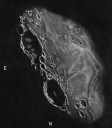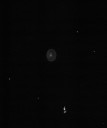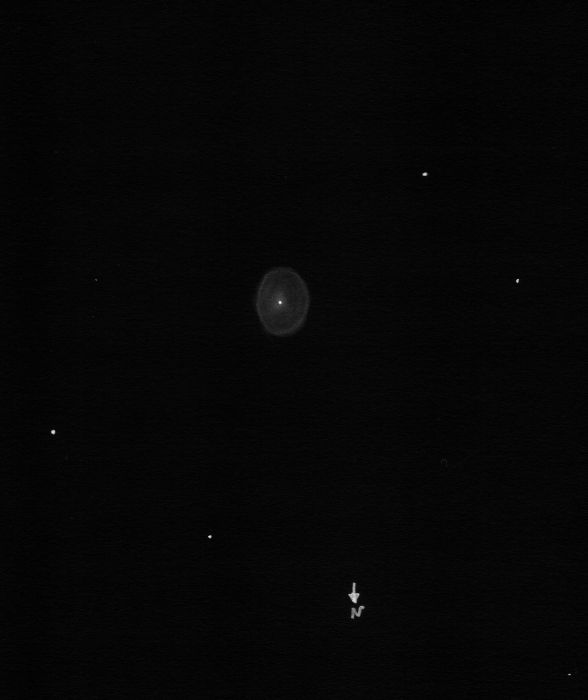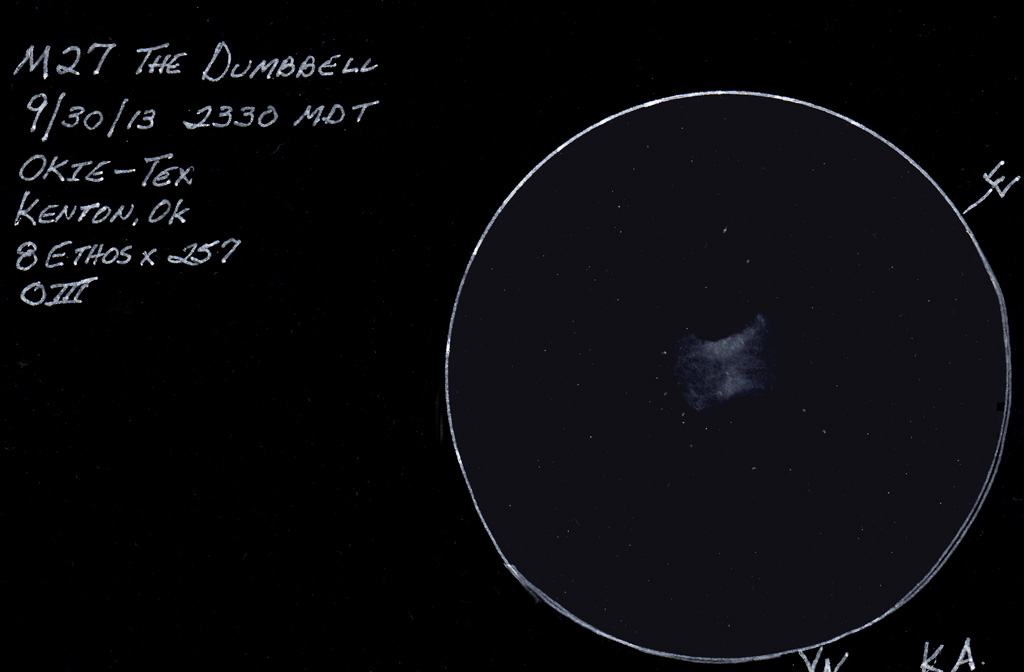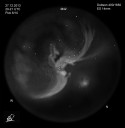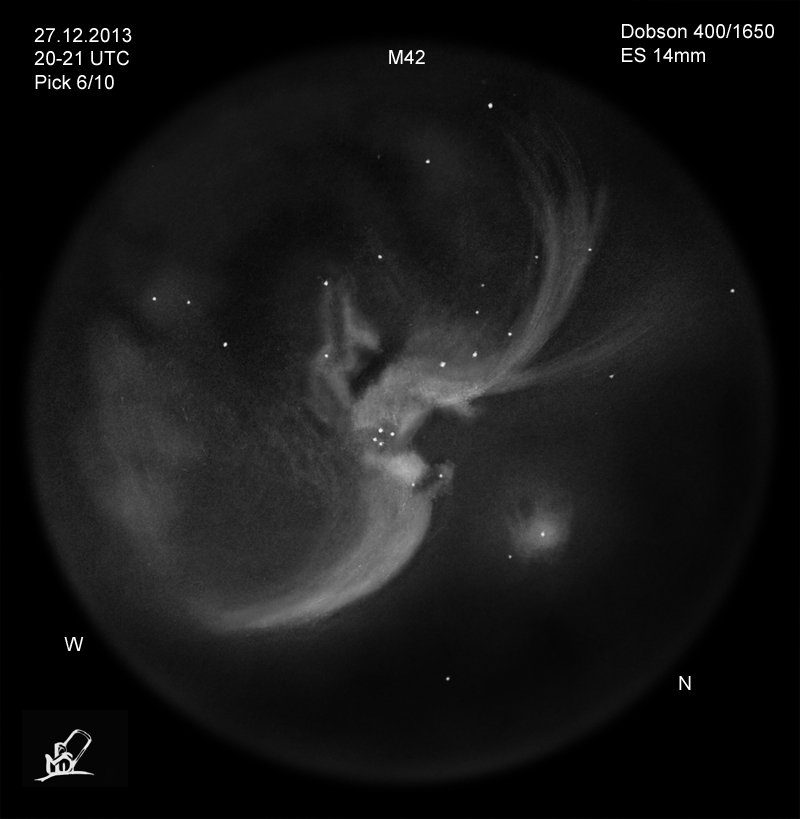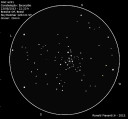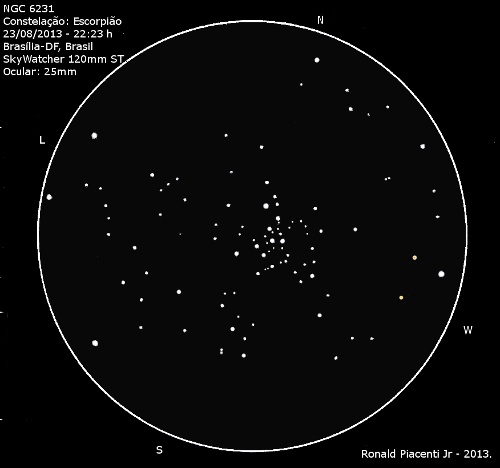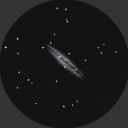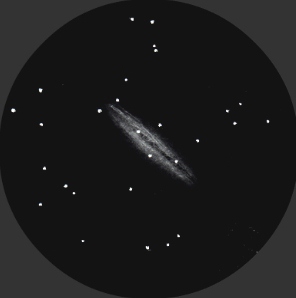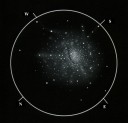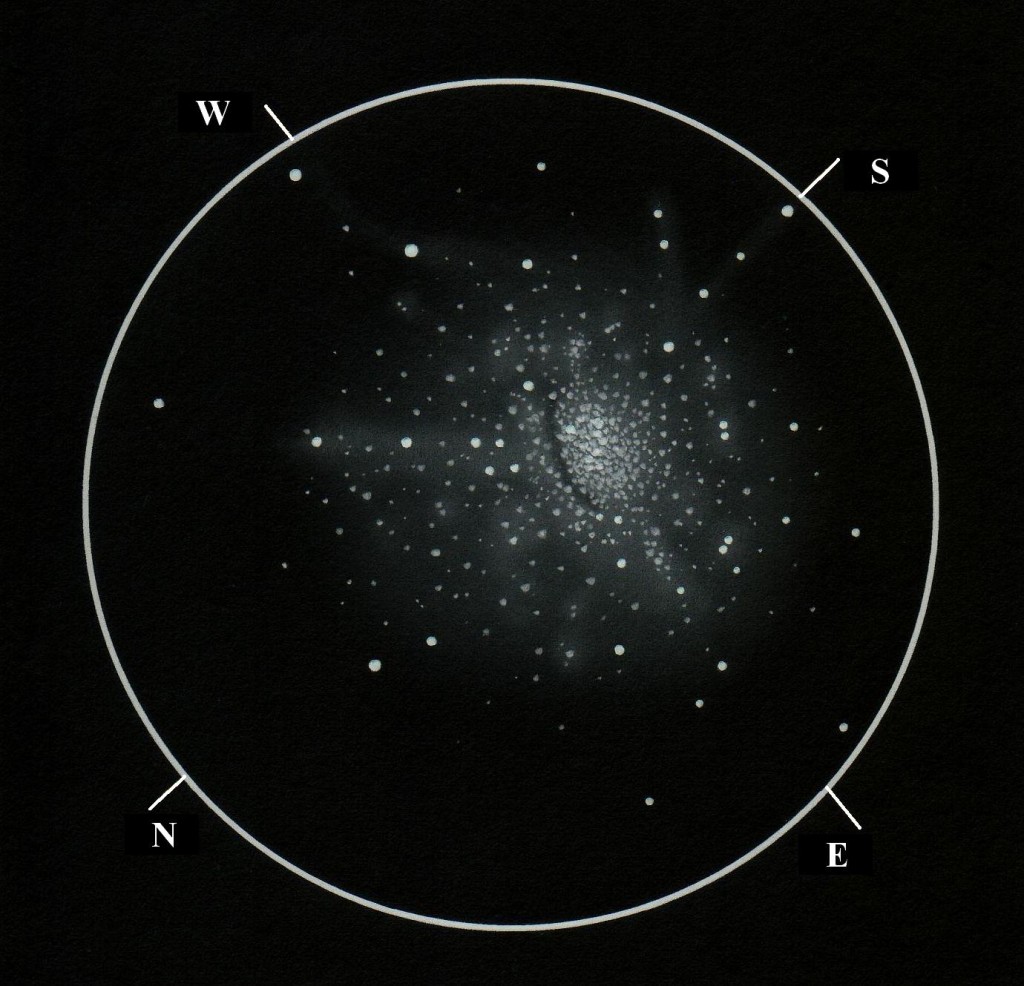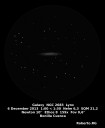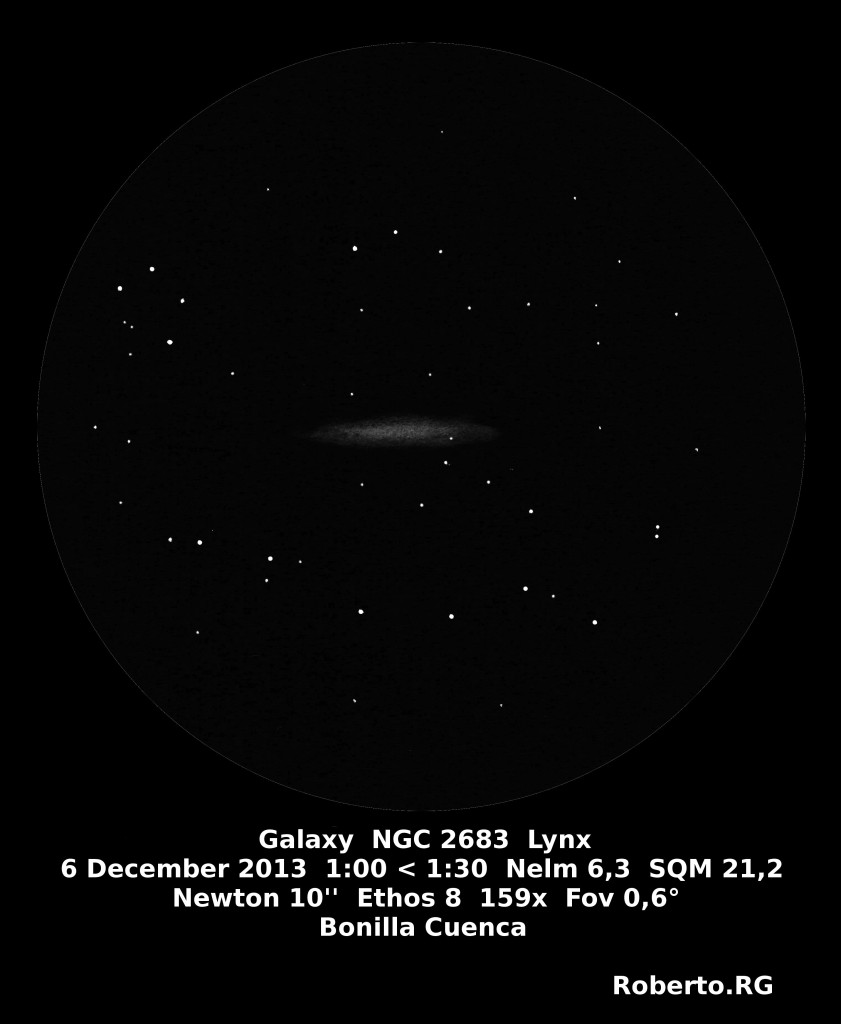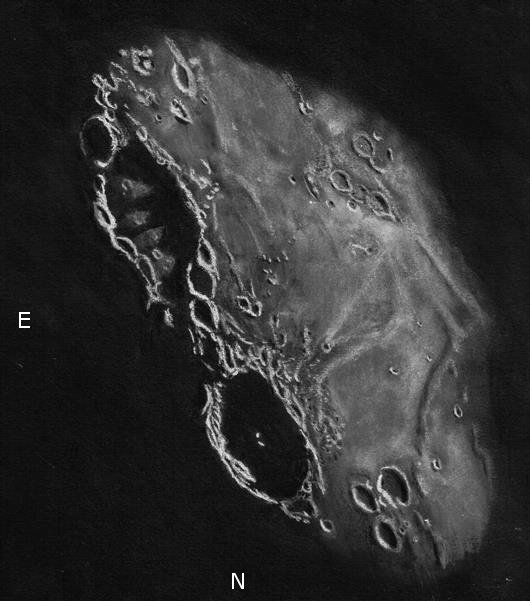
This evening presented the rare, clear sky that we always look forward to enjoying. Early on some deep sky treasures presented themselves at the eyepiece but before long the Moon was up and deep sky targets became washed out. Now my attention and telescope turned toward old luna with the Moon just past full by 2.5 days. My eye ran along the terminator and the famous “four in a row” which rest upon the 61° E longitude line. All four were standing at the edge. I skipped over craters Furnerius and Petavius this time and went north to Vendelinus (147 km.) and Langrenus (133 km.) as they were the easier two sketching targets. As I sketched the younger crater Langrenus, all that was visible from the floor were the tips of the two tallest central peaks pushing up to catch the last of the sunlight. North and west of Langrenus on the eastern edge of Mare Fecunditatis, the trio of Atwood (30 km.), Naonobu (35 km.) and Bilharz (43 km.) were easily seen and parts of the ray system extending from Langrenus was detectable even at this time of low illumination. To the south and straddled by Lohse (41 km.) and Holden (48 km.), Vendelinus was showing its best look for an old shattered crater. Parts of the shallow floor were illuminated by grazing light and presenting a fine view.
Sketching:
For this sketch I used: black Strathmore 400 Artagain paper, 8”x 10”, white and black Conte’pastel pencils, white pearl eraser and blending stumps.
Telescope: 10 inch f/5.7 Dobsonian and 6mm eyepiece 241x
Date: 07-25-2013 04:15-06:00 UT
Temperature: 20°C (68°F)
Clear, calm
Seeing: Antoniadi III
Co longitude: 115.0°
Lunation: 16.7 days
Illumination: 93.0 %
Phase: 329.4°
Frank McCabe
